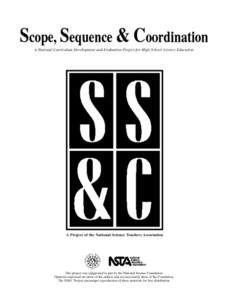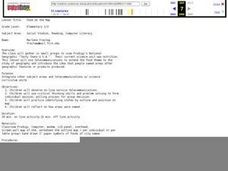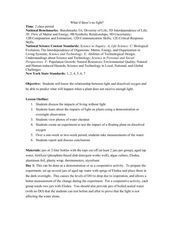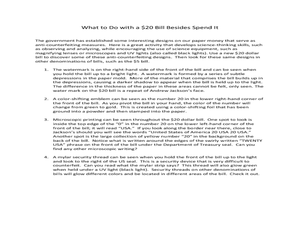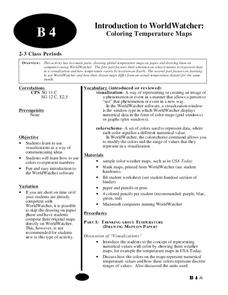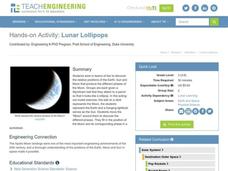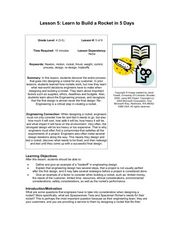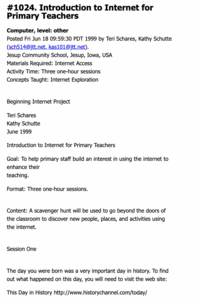Curated OER
Weather in the USA
Students identify the different types of weather conditions that occur in the United States. They discover how to adapt to weather and explain forecast and warning signals.
Curated OER
Acids, Bases, and Indicators
Chemistry or physical science fledglings get comfortable identifying acids and bases with a variety of pH indicators. They discover that different indicator solutions have different ranges, practice testing soil acidity, and use antacids...
Curated OER
Oils and Plastic
Peruse the properties of polymers with your materials engineers, chemistry aces, or emerging ecologists. The inquiries in this resource include puncturing polyethylene plastic bags, dissolving polystyrene cups, creating a polymer...
Curated OER
Food on the Map
Students work together to examine the tastiest towns in the United States. After discovering the names of the equipment, they identify the seven continents. They take a survey and locate the cities and states of the foods mentioned.
Curated OER
What If There's No Light?
young scholars discuss the importance of light and the consequences of living without it. Using a plant as a demonstration, students predict and observe what happens to a plant when it does not receive enough light. In groups, they...
Curated OER
How Much is a Million?
Young scholars discover the magnitude of the number 100. The sense of the number is developed by allowing students to experience 100 by counting it, measuring it, feeling it, and doing it, hands-on
Curated OER
What to Do with a $20 Bill Besides Spend It
Students explore the concept of anti-counterfeiting measure. For this economics lesson, students use science equipment to discover anti-counterfeiting designs. Students then explore other denominations of bills.
Curated OER
Population and Air Pollution
Students conduct Internet research to compare the impact of increasing populations and how it affects air pollution in both, the USA and Russia. Students present their finding in a creative manner by developing brochures, bumper...
Curated OER
Deserts: How Do You Define One?
Second graders identify what constitutes as a desert by reading a habitat checklist. In this environment lesson, 2nd graders read a nature website to discover facts about the desert and where they are located. Students...
Roy Rosenzweig Center for History and New Media
Immigration: Why Come to the United States?
Don't limit your curriculum to texts! Young historians listen to a song, read an interview, and examine a cartoon as they explore motivations for immigrating to the US in the late 19th and early 20th centuries.
Curated OER
Looking Inside Cells
Seventh graders examine the functions and roles of membranes in cells. They discover the differences between plant and animal cells.
Curated OER
Discovery of America
Students examine the European conquest of North America. They participate in activities which allow them to discover the indigenous peoples of the region. They also place events in chrongological order.
Curated OER
Lesson Plan for Reading
Students in an adult ESL classroom are introduced to the definition of freedom of speech. Using the internet, they discover the differences between the rule of law and rule of men. To end the lesson, they examine how the court system...
Curated OER
Time and Cycles - Dendrochronology
Students investigate the lives of trees by examining ring cycles. For this plant life lesson, students identify the field of study known as dendrochronology and discover its history. Students investigate a simulated tree ring...
Curated OER
It's My Right
Students participate in activities examining the Bill of Rights. They discover the different articles and Amendments.
Curated OER
All Caught Up!
Students discover the difficulty involved in trying to isolate a target species by fisherman. They discuss this issue and its problems as a class. They examine how bycatching affects their lives.
Curated OER
The Cuban Missile Crisis-Three Perspectives
Students examine the viewpoints of the major players in the Cuban Missile Crisis. In groups, they research the topic and organize the information into a presentation. They evaluate the decisions made at the time. They also discover the...
Curated OER
Introduction to WorldWatcher: Coloring Temperature Maps
Pupils are introduced to the software program WorldWatcher. In groups, they discover the temperature variations throughout the world and color a map according to the temperatures. They also practice using visualization to communicate...
Curated OER
Recycling and Composting
Students set up composting sites that allow food scraps and paper to be recycled by nature. They are introduced to one aspect of recycling; composting. Students see how God recycles as the worms change garbage into something that brings...
Curated OER
Zome System
Get hundreds of interactive activity plans using the Zome Modeling System. Among dozens of lessons, a first exposure to similar triangles can be very visual for the learner. Here, young geometers explore the number of different shapes...
Curated OER
Lunar Lollipops
Students work with a partner, Styrofoam ball and light source to simulate the positions of the Earth, Moon and Sun at various stages during the phases of the Moon. They describe why the Moon is visible from Earth and complete a worksheet.
Curated OER
Newton Gets Me Moving
Fourth graders experiment with Newton's three laws of motion. For this motion lesson, 4th graders explore the three laws of motion and then work in small groups collaborating while experimenting with these laws. Numerous resources...
Curated OER
Learn to Build a Rocket in 5 Days
Students explore physics by participating in an engineering activity. In this rocket instructional activity, students define a list of scientific vocabulary terms such as "re-engineering" and "trade-off." Students identify the rocket...
Curated OER
Introduction to Internet for Primary Teachers
Students, who are elementary teachers in real-life, explore how they can enhance their lessons by using the Internet. They complete an online scavenger hunt.


